Steel_Wind
Legend
The Harrowing – Paizo’s Surreal Trip Down the Rabbit Hole
In early 2008, Paizo released a card deck for use with their Golarion campaign setting. Intended to provide a method of fortune telling during play and to potentially serve as an alternative Deck of Many Things, the Harrow Deck was released with great fanfare at the time. With the word “harrow” operating as a play on the word “tarot,” the cards were a departure

from Paizo’s card deck line, which had largely been used at that time as props and accessories for treasure and magic items in game. The Harrow Deck featured a unifying art style, drawn and colored by veteran comic artist Kyle Hunter, best known for his whimsical illustrations in both Dungeon and Dragon magazine during Paizo’s stewardship of those periodicals. The deck contained 54 individual illustrated cards and came with a rulebook for using the cards for divination as well as for its card game “Towers”.
Additionally, Paizo incorporated the deck as a game play option as part of the plotline of the Curse of the Crimson Throne Adventure Path.
If the Harrow Deck has a real deficiency, it is the backs of the cards themselves, which feature an illustration from the box art instead of a simpler geometric pattern. I would have preferred a more traditional diamond checkered pattern than a reproduction of the box art logo on the back of each card, so that when the cards appear face down they look more like a traditional tarot deck – and less like a gimmick. The only other oft repeated complaint about the Harrow Deck is that the box is a little too large to tightly constrain all of the cards within it after the cellophane wrappers are removed from each of the 2 x 27+ card decks the product ships with. Admittedly, the cards can rattle around a little bit in the box after it is opened when you shake it. Overall, those are rather petty complaints about the Harrow Deck, a widely acclaimed original and unique RPG game accessory.

The Harrow Deck was well received by fans, ultimately garnering the Gold ENnie at Gencon 2008 for “Best Accessory”. After its appearance in the Curse of the Crimson Throne, the Harrow Deck was absent from Paizo’s adventure products for about three years. Finally, in February 2011, the Harrow Deck reappeared in another Adventure Path, the ENnie award winning Carrion Crown. The divination cards’ presence within Carrion Crown seemed especially appropriate, given that the Ustaslav region where the Adventure Path is set is the homeland of the Varisians, Golarion’s analog to the medieval gypsy culture.
Around the same time as the Carrion Crown AP was being written and developed, Erik Mona, Publisher at Paizo Publishing LLC., decided he wanted to take the use of the Harrow Deck within a Paizo adventure a step further. Mona was determined to have the Harrow Deck become the central plot device of a stand-alone adventure. Mona’s adventure premise would ultimately become The Harrowing.
Mona explained how the idea for the adventure came about : “The artist who drew the Harrow Deck and came up with a lot of the conceptual work for them, Kyle Hunter, is one of my best friends, and I've always had a soft spot in my heart for them. I love the idea of phantasmagoric adventures that stand out from the norm, so I thought it would be a good idea to do just such an adventure in which the PCs get sucked into the world of the deck and have to deal with its unusual denizens.”
“It’s a Trap!”
The central premise of The Harrowing as initially conceived by Mona was to use a cursed harrow deck as a trap and portal to a small demiplane. When Crystal Frasier, Production Specialist at Paizo, pitched her version of The Harrowing to Mona, James Jacobs and Wes Schneider,

she ultimately got the green light to go ahead. “Crystal's proposal was right on the money and exactly what I expected. Well, that's not true. It was actually better than I expected,” Mona clarified.
“Erik wanted the story to just focus on the Harrow Deck and the story behind it,” adventure author Crystal Frasier explains. “The turnover was that they wanted an adventure that revolved around all of the cards in the Harrow Deck.” So Frasier set out to do exactly that.
The Harrowing – Backstory
As Frasier has designed the module, the pocket dimension in which the PCs find themselves is a demiplane created by the Varisian bard Sonnorae, who set out to create a microcosm in which the tales, myths and legends of her people would not be lost to the ages and forgotten. Ultimately, Sonnorae entered into the demiplane she had created from the Dimension of Dreams to permanently dwell there. Like other demiplanes touching Golarion, time does not really pass within the Harrowed Realm and so Sonnorae lived on within it without aging, imbuing the Harrowed Realm with the characters, settings and myths of her people until they finally took physical form. These characters, quite literally come to life straight out of the myths and legends in which they were described over the ages took form as the demiplanes’ only denizens, the Storykin. Eventually, the entrance to the Harrowed Realm demiplane became fixed and tied to Sonnorae’s harrow deck upon Golarion, the Deck of Harrowed Tales.
However charming it first appears, the Storykin are victims of the same tales that gave them life. Like the characters in the Star Trek: The Next Generation episode “The Royale”, or the film Groundhog Day, the lives of the Storykin endlessly repeat without deviation, over and over without cessation. The Storykin yearn to escape this fate -- and the Harrowed Realm -- and to become wholly real. A group of the Storykin, the Conspirators, resolves to kill their creator Sonnorae in order to escape the Harrowed Realm and their endlessly repeating lives.
While the Conspirators are successful in killing their creator and gaining some measure of self-determination, they find they cannot leave the Harrowed Realm. The lesser Storykin around them continue with their ceaselessly repeating lives essentially as before. Still trapped within the Harrowed Realm, the chief Conspirator now seeks to escape by drawing the living of Golarion to the demiplane and grafting the essence of the living onto its own body in order to escape the crushing boredom and despair of this nightmare story land.
I Don’t Think We’re in Kansas Anymore
The premise, as Frasier summarizes is that “ The Harrowing is basically an adventure where you run across a cursed harrow deck that serves as an anchor for an alternate dimension where all of the cards and stories that went into making the original harrow deck are living, breathing characters. You get sucked into this sort of Wonderland and you have to wander around killing people, making allies and figuring out how to get back out.”

While the PCs are trying to figure out what went wrong and how to get out of this bizarre storybook demiplane, the chief Conspirator lies in wait to claim their souls in its own attempt to escape from the Harrowed Realm.
The trap that the Deck of Harrowed Tales presents is a clever design element of the module as it permits any GM, running any campaign, to seamlessly insert the module into it at any time. Because time does not pass in the Harrowed Realm, there are no “plot” consequences in the PCs “real” campaign world as the PCs spend a week (or more) in the Harrowed Realm. A GM running an Adventure Path campaign such as Kingmaker, a home-brew campaign, or as a module approved for use with 8th to 10th level Pathfinder Society characters can each fit The Harrowing into their campaigns without difficulty. All that is required to begin the module is either to present the mission hook provided at the beginning of The Harrowing, or to simply place the Deck of Harrowed Tales into a treasure horde or some undead creature’s possessions. Either way, once the PCs have the pouch with the card deck in their hands, they will find themselves instantly transported to the demiplane. The one catch is that the vortex that sucks the PCs into the Harrowed Realm also brings the Deck of Harrowed Tales with them.
Card Mechanic: It’s All in the Cards
The optional mechanic associated with the Deck of Harrowed Tales is one of the most interesting game mechanics in the module and one of the elements that sets it apart from any other FRPG adventure module ever published. It is such a strong and recurring design element within the adventure that I have difficulty regarding it as an “optional” side dish; rather, it is very much the main course in this banquet.
After entering the Harrowed Realm, the module unfolds principally as a location based adventure within the pocket plane. However, it is soon evident that the locations in which the players find themselves and the denizens of this bizarre storybook land are literally drawn straight from the deck itself. Each encounter, event, or location within the Harrowed Realm the PCs can meet is tied to, is a representation of -- and is affected by -- each card in the Deck of Harrowed Tales. The players can affect the outcome of each encounter and tilt the balance of the encounter in their favor – provided they choose to invoke the correct card(s) within the Deck when the encounter or event begins, or when a location is entered.

The premise of the module’s design -- to use each of the 54 cards within the Harrow Deck within the module itself -- is one aspect of The Harrowing that completely succeeds. Sometimes the clues as to which card(s) should be played are obvious... and sometimes not so obvious. The players must pay attention to their surroundings and use their logic and intuition to divine which cards they should play at the outset of each encounter in order to gain a decided advantage. It may sound somewhat contrived, but because the locations, characters and events in which the players find themselves are literally based upon the artwork in the cards, the mechanic has a very natural feel to it. It makes sense, in the context of the crazy alternate reality in which the PCs find themselves trapped.
The mechanic for card “playing” can in itself present a challenge to players. No card within the Deck of Harrowed Tales repeats itself in The Harrowing, so as the module moves to its conclusion, the pool of cards from which the PCs must make their choices becomes progressively smaller. Whenever a card is played, rightly or wrongly, that card is removed from play. A mistake will necessarily cause the players to miss out on the immediate benefit that playing the right card would have conferred. Moreover, the mistake will also have consequences in a subsequent encounter, as a misplayed card will no longer be available to play when it could have helped.
Central to the task in solving each puzzle in The Harrowing’s encounters and determining which card(s) to play is the artwork upon each of the 54 unique cards in the Harrow Deck. While the name of the card is often itself an obvious clue, Kyle Hunter’s artwork is the inspiration and foundation for Frasier’s Storykin and the Harrowed Realm itself; therefore, the artwork is usually the principal clue for the players to follow.
Caveat: Having a Harrow Deck is More a “Necessity”, Less an “Option”
While The Harrowing’s presentation of a harrow deck coming to life is the module’s greatest strength, it can also be the source of its greatest weakness. While a list of cards titles is provided in the module along with the suggested corresponding card in a standard 52+jokers card deck (the same list appeared in Pathfinder #7), much of the charm of the module will elude players without access to a Harrow Deck. The artwork on the cards really is that important to the design and game play of the module itself.
While it is true that the mere title of each card often provides a substantial clue as to when it should be played, the entire premise of the module -- that the Harrowed Realm is the Harrow Deck incarnate -- instantly dissipates with such an approach. If you simply cannot find a Harrow Deck no matter how hard you try, then this may be the only choice available to you.

However, if you have a choice, I do not recommend that approach at all. The entire point of The Harrowing is tied so closely to the Harrow Deck that you should consider buying a Harrow Deck a necessity and not a mere option in order to play this module. A Harrow Deck is not, in the case of this adventure, a mere cosmetic afterthought or a gimmick. It is, quite literally, the entire premise of the module and deeply affects its entire design and game play.
Lucy in the Sky (with Cards)
The encounters in the Harrowed Realm run the full gamut, from the charming to the bizarre, to the darkly disturbing. The Storykin might have once been characters in a children’s tale, but they have become greatly twisted over time. These are just the sort of characters you might meet in the original Grimm’s Fairy Tales – before Disney and well-intentioned parents removed all trace of anything dark and scary from them. The Storykin may befriend the PCs if they play their cards right (pun intended), but many are just as likely to resolve to eat the heroes or simply torture them to alleviate their boredom.
As you might expect, the overall atmosphere in the Harrowed Realm comes across as outright trippy. The Harrowed Realm is part storybook, part nightmare, part hallucination and wholly surreal by design. The surreal nature of both the inhabitants and the place where the PCs find themselves is so obviously bizarre, plainly artificial and wholly wrong that the entire premise works brilliantly.
Author Crystal Frasier explains that while growing up as a young girl in Florida, Alice in Wonderland was one of her favorite stories. While the invisible hand of Lewis Carroll can be felt at times within the module, Frasier draws on other imagery and inspiration too, some of it far more sinister and disturbing than anything Alice had to deal with. You don’t read The Harrowing to your six-year old before bedtime.
The Harrowing - Production Values
The remarkable quality of the module is also present throughout the production values of the product. Visually, The Harrowing is the most attractive stand-alone module that Paizo has yet released. Frasier agrees with my impressions of the physical presentation of the module, “Andrew Vallas is our new graphic designer at Paizo and he is absolutely amazingly gifted. We also have some new artists who worked on The Harrowing, Norwegian artist Yngvar Asplund and Russia’s Dmitry Burmak. Their work is just gorgeous; it’s so colorful, round and descriptive.”

Frasier is (rightly) effusive in her praise of the entire team who worked on The Harrowing. “I probably owe a few favors at this point. It just turned out gorgeous because we started out with a really good pitch, with a product that everybody at Paizo loved already. We had a lot of art resources to begin with, too. We had these beautiful card borders. We had Kyle Stanley Hunter’s original drawings for the Harrow Deck that we could send to our artists as reference to give them a better idea of what we wanted. Everything just sort of came together in this perfect storm and we ended up with a beautiful, beautiful product.”
While the layout and illustration artwork is indeed beautiful, the attractiveness of the module also continues through to the one aspect of an adventure where making a mistake can be impossible to recover from: cartography.
“The cartography, by veteran artist Rob Lazzaretti is absolutely beautiful. It was a heck of a challenge, too. In the Harrow Deck we have nine location cards, that is, nine cards that are places instead of people or concepts and we wanted a setting for each of those.” Frasier says.
Erik Mona agreed and is very pleased with how the module turned out, acknowledging, “The entire production team on the module worked very hard and turned in their best performance.”
On Your Way Out…
When asked how she managed to craft her tale around such a seemingly random and disparate deck of pseudo-tarot cards, Frasier was thoughtful for a moment. “It’s kind of strange, but I sort of built this bizarre mythology for Varisia in the back of my mind as I was writing this. Once I was done looking through all the cards and figuring out what stories they went with, writing the actual adventure was incredibly easy.”
As for what is ahead for Frasier: “At the moment, I’m interested in doing another module. It’s mostly just an issue of finding the spare time. Obviously, Paizo keeps us all incredibly busy, as much as we’d all love to write every single product in-house. I’ve got a couple of ideas for modules I’m kicking around. One is sort of a Shakespearean romantic comedy idea with a gargoyle (Shakespeare was all about gothic statuary) and another is about hideous mutant octopi abominations.”
I am not too sure about “Shakespeare and gargoyles”. Then again, do you know what would have happened if someone had told me before I reviewed The Harrowing that a module based upon a faux-tarot deck, peopled by storybook characters - during which the PCs play cards before each encounter - would become my favorite Paizo module to date? I would have responded that they were stark frikkin’ insane and that could never, ever, happen with that sort of premise; no way, no how. And I would have been dead wrong, too.
Shows you what I know. So bring on Romeo, Juliet, and the gargoyles Crystal. I’m game.
Title: The Harrowing
Author: Crystal Frasier
Type: PFRPG Adventure (9th level) 32 pages
Price: $13.99 Print/$9.99 PDF Paizo.com
Title: Pathfinder Chronicles: Harrow Deck
Type: 58 Cards in double wide-box + rulebook
Price: $15.99 Paizo.com
To find out more about The Harrowing and to listen to the “spoilerific” interview with author Crystal Frasier together with individual encounter analysis and tips for running The Harrowing, listen to Episode #016 of the (ENnie Award Winning) Chronicles: Pathfinder Podcast, due out later this month on d20Radio.com.
"All artwork depicted in this review article is copyright Paizo Publishing LLC. and is used herein with the express permission of the copyright holder."
Attachments
-
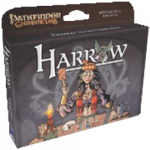 HarrrowDeck_180A1_small.png91.1 KB · Views: 18,743
HarrrowDeck_180A1_small.png91.1 KB · Views: 18,743 -
 HarrowingA1_small.png130.1 KB · Views: 18,804
HarrowingA1_small.png130.1 KB · Views: 18,804 -
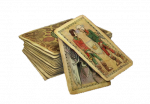 harrowingtarotA1_small.png180.4 KB · Views: 21,762
harrowingtarotA1_small.png180.4 KB · Views: 21,762 -
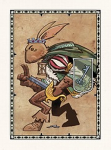 HarrowRabbitPrince_180_small.png169.7 KB · Views: 18,694
HarrowRabbitPrince_180_small.png169.7 KB · Views: 18,694 -
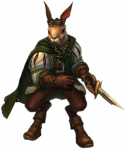 RabbitPrinceA1_small.png119.6 KB · Views: 19,977
RabbitPrinceA1_small.png119.6 KB · Views: 19,977 -
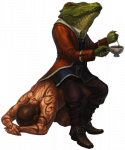 RakshasaA1_small.png134.3 KB · Views: 19,537
RakshasaA1_small.png134.3 KB · Views: 19,537 -
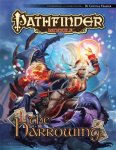 Harrowcover400.jpg70.5 KB · Views: 19,544
Harrowcover400.jpg70.5 KB · Views: 19,544
Last edited:










